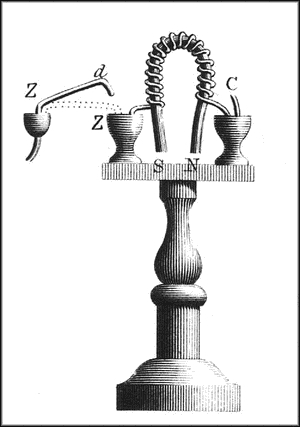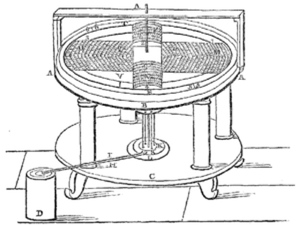The secret to wax on wax off the karate kid. its coming mr poo the waxing gibbis u are telling us. about.
I finally discovered a link to real facts. this is your comet >>> ELinin <<<remember i our friend mr pool made a connection with sedan. now we have actual evidence of the same.
skip to 2 hours fifty nine minutes to see this connection...
Waxing Gibbous on 5 October 2014 Sunday
Home
Lunar calendar
2014
October
Moon phase on 5 October 2014 Sunday is Waxing Gibbous, 11 days young Moon is in Pisces.
Share this page:
Moon phase for 5 October 2014 Sunday 12:00 UTC
Lunar calendar 2014 | October 2014
Waxing Gibbous phase
Waxing Gibbous phase
Image credit: NASA/Goddard Space Flight Center Scientific Visualization Studio.
Waxing Gibbous 88% illuminated
Waxing Gibbous is the lunar phase on 5 October 2014, Sunday. Seen from Earth, illuminated fraction of the Moon surface is 88% and growing larger. The 11 days young Moon is in ♓ Pisces.
Previous | Today | Next
Moon phases for next 7 days
Monday
Tuesday
Wednesday
Thursday
Friday
Saturday
Sunday
6October
Waxing
Gibbous♓ Pisces
7October
Waxing
Gibbous♈ Aries
810:51
Full
Moon*♈ Aries
9October
Waning
Gibbous♉ Taurus
10October
Waning
Gibbous♉ Taurus
11October
Waning
Gibbous♉ Taurus
12October
Waning
Gibbous♊ Gemini
7 days ago | 7 days after
Moon phase and lunation details
3 days after First Quarter
Previous main lunar phase is the First Quarter before 3 days on 1 October 2014 at 19:33.
Moonrise and moonset
Moon rises in the afternoon and sets after midnight to early morning. It is visible to the southeast in early evening and it is up for most of the night.
Moon is entering ♓ Pisces
Moon is passing first ∠2° of ♓ Pisces tropical zodiac sector.
Apparent angular diameter ∠1972"
Lunar disc appears visually 2.7% wider than solar disc. Moon and Sun apparent angular diameters are ∠1972" and ∠1919".
Hunter Moon after 2 days
Next Full Moon is the Hunter Moon of October 2014 after 2 days on 8 October 2014 at 10:51.
Upcoming main Moon phases
Full Moon in Aries ♈ after 2 days on 8 October 2014 at 10:51
Last Quarter in Cancer ♋ after 10 days on 15 October 2014 at 19:12
New Moon in Libra ♎ after 18 days on 23 October 2014 at 21:57
First Quarter in Aquarius ♒ after 25 days on 31 October 2014 at 02:48
Neap tide
There is low ocean tide on this date. Sun and Moon gravitational forces are not aligned, but meet at big angle, so their combined tidal force is weak.
Lunation 182 / 1135
The Moon is 11 days young. Earth's natural satellite is moving from the first to the middle part of current synodic month. This is lunation 182 of Meeus index or 1135 from Brown series.
Previous | Current lunation | Next
Synodic month length 29.65 days
Length of current 182 lunation is 29 days, 15 hours and 43 minutes. It is 1 hour and 7 minutes longer than next lunation 183 length.
Lunation length longer than mean
Length of current synodic month is 2 hours and 59 minutes longer than the mean length of synodic month, but it is still 4 hours and 4 minutes shorter, compared to 21st century longest.
Lunar orbit position on 5 October 2014 Sunday 12:00 UTC
True anomaly ∠218.3°
This lunation true anomaly is ∠218.3°. At the beginning of next synodic month true anomaly will be ∠252.3°. The length of upcoming synodic months will keep decreasing since the true anomaly gets closer to the value of New Moon at point of perigee (∠0° or ∠360°).
Moon before perigee
14 days after point of apogee on 20 September 2014 at 14:22 in ♌ Leo. The lunar orbit is getting closer, while the Moon is moving inward the Earth. It will keep this direction for the next day, until it get to the point of next perigee on 6 October 2014 at 09:41 in ♓ Pisces.
Previous apogee | Next perigee
Distance to Moon 363 503 km
Moon is 363 503 km (225 870 mi) away from Earth on this date. Moon moves closer next day until perigee, when Earth-Moon distance will reach 362 481 km (225 235 mi).
Moon before descending node
9 days after its ascending node on 25 September 2014 at 17:41 in ♎ Libra, the Moon is following the northern part of its orbit for the next 3 days, until it will cross the ecliptic from North to South in descending node on 8 October 2014 at 17:44 in ♈ Aries.
Previous node | Next node
Draconic month
9 days after beginning of current draconic month in ♎ Libra, the Moon is moving from the beginning to the first part of it.
Previous | Current draconic month | Next
Moon after southern standstill
4 days after previous South standstill on 30 September 2014 at 19:29 in ♐ Sagittarius, when Moon has reached southern declination of ∠-18.528°. Next 8 days the lunar orbit moves northward to face North declination of ∠18.517° in the next northern standstill on 13 October 2014 at 13:34 in ♊ Gemini.
Previous standstill | Next standstill
Syzygy in 2 days
After 2 days on 8 October 2014 at 10:51 in ♈ Aries, the Moon will be in First Quarter geocentric opposition with the Sun and this alignment forms next Sun-Earth-Moon syzygy.
Previous syzygy | Next syzygy
Share this page:
Sources and credits
Parts of this Lunar Calendar are based on Planetary Ephemeris Data Courtesy of Fred Espenak,
www.Astropixels.comMoon phase image credit to NASA/Goddard Space Flight Center Scientific Visualization Studio, svs.gsfc.nasa.gov
Back to: Top of page
Waxing Gibbous Moon Definition
What is a waxing gibbous moon? The waxing gibbous moon, is defined to occur when the Moon appears to be more than one-half but not fully illuminated by direct sunlight. Because the fraction of the Moon’s disk that is illuminated is increasing, we consider the Moon to be “waxing.” Each new lunar cycle is measured beginning at each new moon and the waxing crescent moon occurs when the Moon is more than one-quarter but less than one-half of the way around the sky (i.e., along its orbit) from new moon.
Waxing Gibbous Moon Dates / Next Waxing Gibbous Moon
When is the next waxing gibbous moon? A waxing gibbous moon is seen one to two weeks after a new moon. The average calendrical month, which is 1/12 of a year, is about 30.44 days, while the Moon’s phase (synodic) cycle repeats on average every 29.53 days. Therefore the timing of the Moon’s phases shifts by an average of almost one day for each successive month. To find out the waxing gibbous moon dates, please see the waxing gibbous moon calendar below.
Waxing Gibbous Moon and The Moon Phases
Waxing Gibbous Moon
Waxing Gibbous Moon
The waxing gibbous moon happens when the moon is between a 45 and 90 degree angle with respect to the Earth and Sun. So we are seeing more than half of the moon illuminated and less than half in shadow. The word gibbous refers to phases where the moon is more than half illuminated. “Waxing” essentially means growing or increasing in illumination. Each evening, as the moon’s orbital motion carries it towards the Earth-sun line, we see more of the moon’s day side.
Each lunar cycle begins with a new moon. As the Moon moves eastward away from the Sun in the sky, we see a bit more of the sunlit side of the Moon each night. We call this waxing. After the new moon, the sunlit portion is increasing, but less than half illuminated, so it is a waxing crescent moon. When half of the Moon’s disc is illuminated, we call it the first quarter moon. As the sunlit portion continues to increase, now more than half illuminated, it becomes waxing gibbous moon. When the Moon reaches maximum illumination, a full moon, the Moon has completed one half of the lunar month.
During the second half of the lunar month, the Moon grows thinner each night. We call this waning. The waning gibbous moon phase occurs first, followed by the last quarter moon when half of the Moon’s disc is illuminated. Next is the waning crescent moon, which wanes until the illumination is completely gone; a new moon.
Waxing Crescent Moon Calendar 2012
The waxing crescent moon calendar for 2012 is expressed in Coordinated Universal Time (UT), the international basis for other time zones, and occurs on the days between each first quarter moon and full moon. On these days, a waxing gibbous moon rises during the hours between noon and sunset. It sets in the wee hours after midnight. Astronomers call one lunar cycle a lunation. For waxing gibbous moon times in your city, please use the Time Zone Converter.
Lunation New Moon First Quarter Full Moon Last Quarter
1001 Jan 1 06:15 Jan 9 07:30 Jan 16 09:08
1002 Jan 23 7:39 Jan 31 04:10 Feb 7 21:54 Feb 14 17:04
1003 Feb 21 22:35 Mar 1 01:22 Mar 8 09:40 Mar 15 01:25
1004 Mar 22 14:37 Mar 30 19:41 Apr 6 19:19 Apr 13 10:50
1005 Apr 21 07:18 Apr 29 09:58 May 6 03:35 May 12 21:47
1006 May 20 23:47 May 28 20:16 Jun 4 11:12 Jun 11 10:41
1007 Jun 19 15:02 Jun 27 03:30 Jul 3 18:52 Jul 11 01:48
1008 Jul 19 04:24 Jul 26 08:56 Aug 2 03:27 Aug 9 18:55
1009 Aug 17 15:54 Aug 24 13:54 Aug 31 13:58 Sep 8 13:15
1010 Sep 16 02:11 Sep 22 19:41 Sep 30 03:19 Oct 8 07:33
1011 Oct 15 12:02 Oct 22 03:32 Oct 29 19:50 Nov 7 00:36
1012 Nov 13 22:08 Nov 20 14:31 Nov 28 14:46 Dec 6 15:32
1013 Dec 13 08:42 Dec 20 05:19 Dec 28 10:21
Gibbous Moon
Any moon that appears more than half lighted but less than full is called a gibbous moon. The word gibbous comes from a root word that means hump-backed. You can see the hump-backed shape of the waxing gibbous moon.



